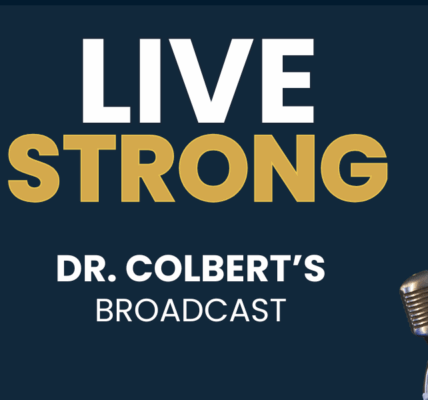- Homepage
- Keto Zone Articles
- Top 12 Keto Questions Answered (Part 1)
Top 12 Keto Questions Answered (Part 1)
Top 12 Keto Questions Answered (Part 1)
1. Isn’t It Unhealthy to Eat All That Fat?
Actually, healthy fats and the ketones they help produce (in the absence of carbs/glucose) are extremely healthy for our bodies.
First, depending on the keto plan used, keto eaters should be eating a variety of fats, with an emphasis on monounsaturated fats from like olive oil and avocados, medium-chain triglycerides, omega-3s, and saturated fats from coconut, cocoa butter, and more.
These fats:
- Have been shown to support healthy cholesterol profiles, brain health, inflammation, and more (see below).
- Coconut Oil has been found to be a healthy choice in study after study, even promoting an increase in natural calorie expenditure by the body (1), improved HDL (2), and more.
- While saturated fats often promote an increase in total cholesterol, it’s often due to a rise in healthy HDL. What’s more, LDL has subsets, some which are harmful and some which are not. LDL is not actually a great predictor of cardiovascular risk (3).
- Monounsaturated fats are extremely healthy, supporting healthy cholesterol levels and reduced inflammation, and more.
Second, the Keto Zone plan includes ~75% or more calories from fat. This amount is usable by the body to produce ketones, balance hormones, and without carbohydrates, promote fat loss.
2. Is the Keto Diet Safe to Follow?
It has been studied and found to be effective and safe. Ketosis itself has been found to invoke anti-aging benefits, brain health benefits, cardiovascular benefits, and more.
What’s more, many people would drastically improve their health by losing 10-15% of their body weight. If overweight, this amount of weight loss can help normalize blood sugars, blood pressure, cholesterol, hormones, etc.
As more and more modern-day people use keto as a diet, more and more long-term studies will come out on its effects. But as for now, there are many great benefits and low risks to eating a healthy keto diet, especially compared to eating a “standard American diet” and/or being overweight.
3. What are Ketones? Is Ketosis Bad?
Ketones are a natural fuel your body produces in the absence of adequate blood glucose. Essentially, your body turns from a sugar-burning machine into a fat-burning one. After an initial adjustment period (keto flu), there are typically no negative consequences to ketosis. And, there are many benefits. These include:
- Mental clarity and focus
- Long-lasting energy
- Appetite suppression
- Abdominal and whole-body weight loss
Of note, many people confuse ketosis with ketoacidosis.
Now, ketoacidosis is a very real medical threat and emergency. However, it impossible for anyone to experience it unless they have Type I Diabetes.
4. How Many Carbs Do You Actually Eat on a Keto Diet?
The Keto Zone diet requires a baseline of about 75% or more calories from fat, 15-20% calories from protein, and only 5-10% calories from carbohydrates.
For most people, a good place to start is 20-25 grams or less net carbs per day. Net carbohydrates are your total carbohydrates minus any fiber or sugar alcohols.
However, as someone who continues on Keto Zone, they may be able to slightly increase or decrease your actual intake of carbohydrates. Some people are able to maintain ketosis with 30-40 grams of net carbohydrates per day.
5. How Much Weight Can You Lose on the Keto Diet?
Many keto eaters have lost hundreds of pounds on keto. There’s little doubt it’s effective for weight loss as long as it’s followed. You can certainly look at different social media forums to see weight loss transformation stories and photos.
What’s more, many people experience weight loss and body changes early in their keto journey, within the first couple of weeks. In addition, those who have the most fat to lose often see the most weight loss initially. It can become more difficult as you get to your goal weight.
There have been keto weight loss studies. Like most weight loss studies, the results vary due to human compliance and diet reporting.
First, one study of 20 obese participants resulted in an average of a 44-pound weight loss per person over 4 months following the keto diet. The fat loss was mostly dangerous visceral fat. This study was limited in the number of participants, and there was no placebo group (4).
Some long-term studies have found that results are similar in the long run whether adults follow a keto diet or another weight loss diet (5). However, weight loss studies are often difficult to assess in the longterm due to participant compliance issues and nuances of eating over years of time. Other studies have shown better success initially and in the long term with keto versus low-fat diets.
And, it’s a journey. Typically, anyone losing a lot of weight experiences ups and downs, plateaus, successes, and more. It’s a choice to change your lifestyle to a healthy one, and Keto Zone eating is one part of it.
6. Is It Low-Fiber?
It depends on the food that is chosen. Technically, it can be low or high fiber. But within the Keto Zone plan, we encourage high fiber whole-food choices.
In fact, as you substitute refined grains with nuts and nut flours, whole-food vegetables, and more, you’ll find that your fiber intake will likely increase. And, there’s a lot of motivation to increase fiber in order to reduce net carbs (net carbs = total carbs – fiber).
What’s more, most Standard American Diet (SAD) eaters consume less than the recommended 20+ grams (6). Here’s how a Keto Zone eater can easily improve on this number:
- 3 servings of vegetables (6-10 grams of fiber)
- ¼ cup nuts or 2 Tbsp nut meal (4 grams of fiber)
- 2 tablespoons of seeds such as hemp seeds (4 grams of fiber)
- 2 tablespoons chia seeds per day (8 grams of fiber)
- 1 serving fiber supplement (6 grams of fiber)
It absolutely doesn’t have to be a low-fiber diet.
7. Can I Eat Fruits on Keto?
Yes, you can eat low-sugar fruits, in small amounts.
And here’s the thing: vegetables and fruit are important. Study after study has found that they reduce cancer risk, cardiovascular diseases, obesity, osteoporosis, high blood pressure, depression, respiratory diseases, and gastrointestinal diseases.
They are loaded with antioxidants and phytochemicals.
But, you don’t need fruit. If you eat vegetables, you’re covered. Vibrantly colored vegetables have all the nutrients, without the sugars. If you enjoy fruits, you can add some on Keto Zone. Try including these within your carb limits:
- Raspberries: 3 g net carbs per ½ cup
- Strawberries: 2 g net carbs per ¼ cup slices
- Blueberries: 4 g net carbs per ¼ cup
- Blackberries: 3 g net carbs per ½ cup
- Cranberries: 4 g net carbs per 1/2 cup
This is only Part 1 of our Top 12 Keto Questions Answered. Our next post will contain #8-12.
Bottom Line
There are many misconceptions and myths about Keto eating. Hopefully, these first 8 of the 12 Top Keto Questions Answered will bring clarity to you and anyone with whom you’d like to share it. For #9-12, look for tomorrow’s post. And, to get complete clarity on the Keto Zone Diet, look no further than these resources:
Dr. Colbert’s Keto Zone Diet Book
Keto Zone Starter Kit (Includes Book)
FREE 21-Day Keto Zone Challenge








